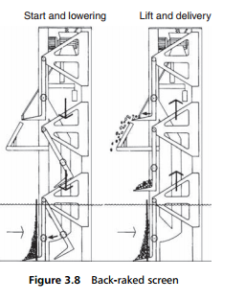0
-
An empty cart
You have no item in your shopping cart
envato-wordpress-toolkit domain was triggered too early. This is usually an indicator for some code in the plugin or theme running too early. Translations should be loaded at the init action or later. Please see Debugging in WordPress for more information. (This message was added in version 6.7.0.) in /var/www/wp-includes/functions.php on line 6121g5plus-darna domain was triggered too early. This is usually an indicator for some code in the plugin or theme running too early. Translations should be loaded at the init action or later. Please see Debugging in WordPress for more information. (This message was added in version 6.7.0.) in /var/www/wp-includes/functions.php on line 6121A wide range of screens is used for the removal of solids from water in large-scale water handling systems. Where water is pumped from rivers or lakes (or from the sea, either as feed to a desalination plant, or for cooling purposes), screens are
employed on the intake side to protect the pumps from debris in the water, although this does not necessarily eliminate the need for intake strainers or finer screens on the pump inlet itself. The selection problems of screening may also be specific to
the locality involved, which can dictate the type of screen or protection necessary. Thus special protection may be needed to deal with weed or grass in sea water, which will easily pass through coarse screens or readily clog fine ones. In other
localities, marine life inducted with the water may present a special clogging problem. These situations can demand highly individual solutions.
Screens are also used to remove large inorganic solids from sewage and industrial wastes. The principle involved is exactly the same. Solids are retained on the screening surface, from which they must be removed at regular intervals, to prevent clogging of the screen. This can be done by scraping or raking the screen, or employing moving screens.
A typical stationary screen consists of a vertical or near vertical grille of rectangular bars, with spacings of 25mm or less. These can be cleaned by a rake, whose teeth engage with the spaces between the bars, and which moves upwards across
the face of the grille, removing collected solids from it. This rake may extend the full width of the screen, and it is then lifted up to provide front cleaning by scraping the surface of the grille, and carrying solids up to the discharge point. Alternatively and particularly for wider screens, the trash rake is much narrower than the width of the screen, and traverses that width, as well as being raised or lowered on a cable. The rake in this case is unguided, to allow it to ride over any large obstructions in the water. Rake teeth are hydraulically moved to their open and closed positions. All debris is picked up on the rake and then dumped over the top of the screen.
In a travelling screen, the screening surface consists of a number of hinge-connected panels or baskets, which hang vertically, supported by guides. The baskets are then elevated by a chain drive. Each screen in the array is thus progressively raised to the head end, carrying debris with it, where it is cleaned by a spray of water. The cleaned screens are then returned vertically to the bottom and brought forward to repeat the cycle of operation, working on an endless belt principle.
Developments in continuous self-cleaning screens have demonstrated considerable improvements in filtering debris from water, wastewater and even slurries.
The advantage of the back-raked screen is that the cleaning forks are positioned on the clean liquid side of the screen ( Figure 3.8), and move through the screen from its back side, lifting the solids away from the screen and not forcing them into
the gaps between the bars. The parked position for the cleaning rake is at the uppermost height of its travel. The cleaning mechanism is actuated from a water level signal (upstream level or differential) or by a timer. The cleaning rake is attached to a wheeled carriage that in turn is powered by a geared motor.
During the downward travel, the rake is in a retracted position. At the point of lowest travel, counter-balancing drives the rake into the bar spaces. If the rake does not engage due to heavy loading, the upward travel of the carriage forces the rake
into position. The cleaning forks of the rake collect the solids from the screen bars and lift them to the discharge chute where a hinged wiper pushes the solids onto that chute.
